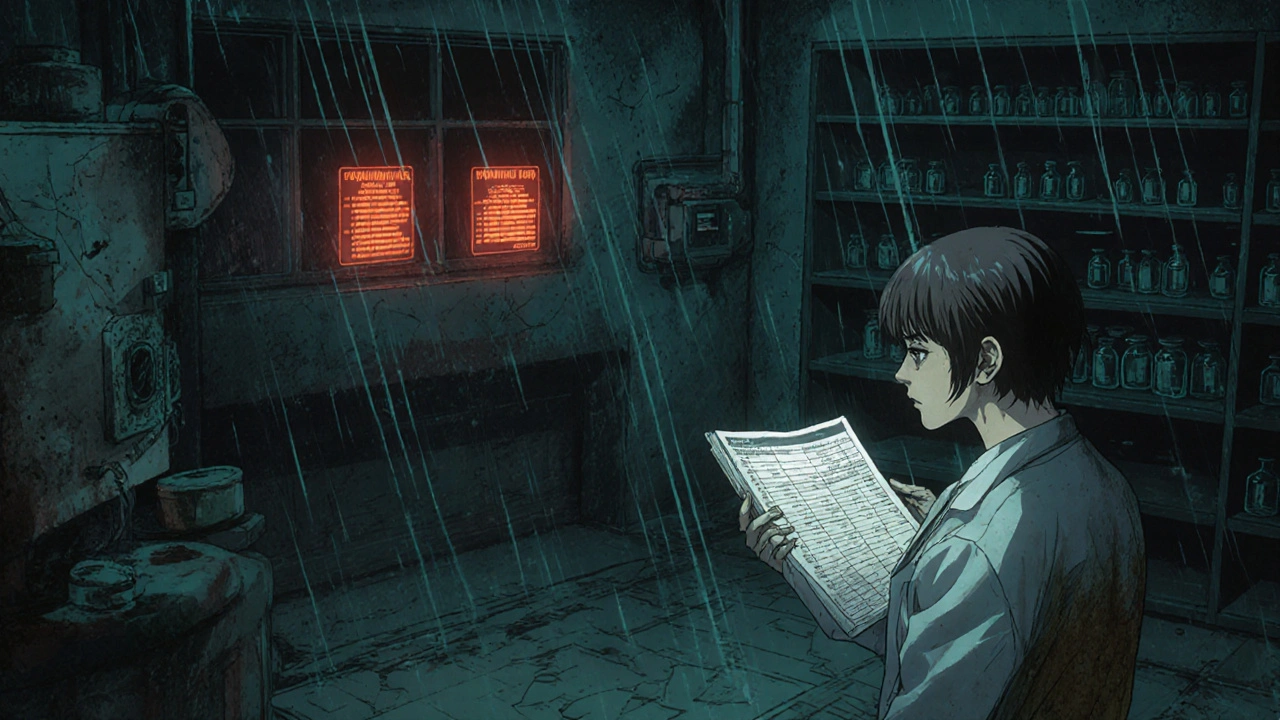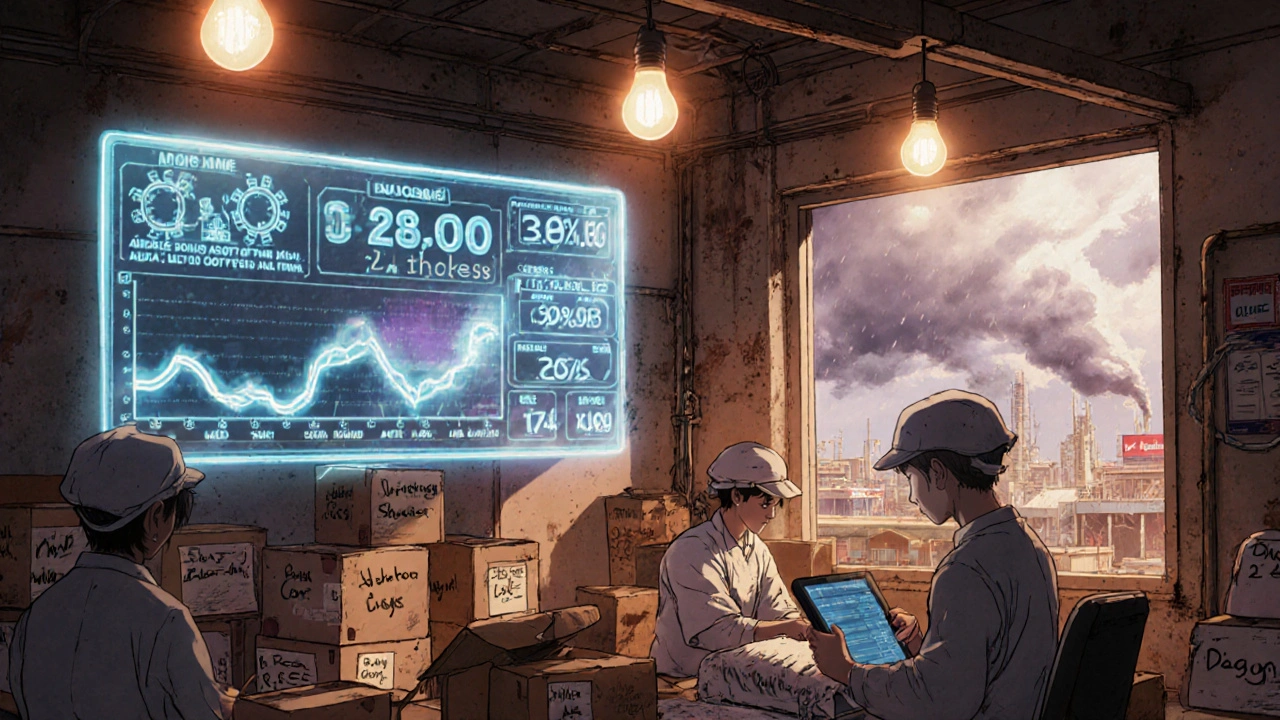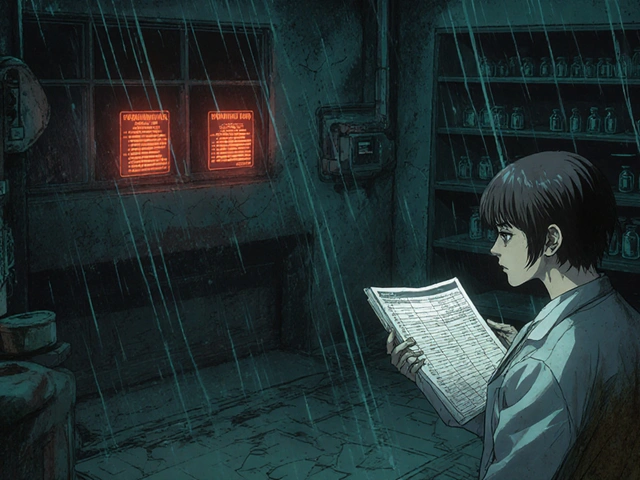Pricing Pressure and Shortages: How Drug Manufacturers Are Struggling in 2025

By 2025, the quiet crisis in drug manufacturing has become impossible to ignore. It’s not just about empty shelves in pharmacies. It’s about manufacturers-often small, family-run operations-facing a financial squeeze so tight that some are walking away from entire drug lines. The root cause? Pricing pressure and shortages are locking arms, creating a cycle no one saw coming.
Why Are Generic Drugs So Cheap? And Why That’s the Problem
For years, the U.S. and global markets rewarded low prices for generic drugs. Pharmacies wanted the cheapest option. Insurers pushed for the lowest copay. Patients assumed cheaper meant better value. But behind every $5 bottle of amoxicillin or $10 bottle of metformin is a manufacturer trying to survive.
These companies operate on razor-thin margins-sometimes as low as 2-5%. When the cost of active pharmaceutical ingredients (APIs) jumps, or when tariffs hit raw materials like aluminum for blister packs or glass vials, there’s no room to absorb it. Unlike branded drugs, generics can’t raise prices freely. Competitors are right there, ready to undercut you by pennies.
According to the Manufacturers Alliance survey from October 2025, 86% of drug manufacturers say rising input costs are their biggest financial burden. That’s not just steel or semiconductors-it’s the chemicals needed to make antibiotics, blood pressure meds, and insulin. One manufacturer in Ohio told a trade group they saw API costs for metformin rise 21% in just 10 months. They couldn’t raise the price. So they cut production. Now, 12 U.S. states are reporting shortages of the drug.
The Supply Chain That Never Fixed Itself
After the pandemic, everyone promised to fix drug supply chains. But the fixes never came. Instead, geopolitical chaos made things worse.
Over 70% of the world’s APIs still come from just two countries: India and China. Trade restrictions introduced in 2024-especially around rare earth metals used in drug packaging and purification equipment-have spiked costs. Tariffs on these materials have jumped from 2.4% at the start of 2025 to nearly 11.5% by August. That’s not just a tax-it’s a direct hit to the bottom line.
And it’s not just tariffs. Climate disruptions are playing a role. Floods in India’s chemical hubs shut down production for weeks in early 2025. Droughts in China forced factories to cut water use, slowing down purification processes. One manufacturer in New Jersey said they lost 14 weeks of production on a critical heart medication because the API supplier in Gujarat couldn’t meet quality standards after a monsoon ruined their water filtration system.
Result? 43% of generic drug manufacturers reported at least one shortage in 2025. That’s up from 29% in 2023. And it’s not just obscure drugs. Common ones like levothyroxine, hydrochlorothiazide, and even injectable epinephrine have hit critical levels.
Manufacturers Are Choosing What to Make-And What to Walk Away From
When you can’t make money on a drug, you stop making it. Simple as that.
Small manufacturers don’t have the capital to hedge against price swings or invest in new facilities. Many are shutting down entire product lines. One company in Pennsylvania stopped making a widely used antibiotic because the cost to test each batch for purity had risen 37%-but the price they could charge hadn’t budged in five years.
It’s not just about cost. It’s about risk. If you’re a small manufacturer and the FDA inspects your facility and finds a minor compliance issue, you could be shut down for months. The cost of fixing it? Often more than the profit you’d make from the drug over three years. So you don’t fix it. You just stop.
That’s why the FDA reported a 22% increase in drug shortage notifications in the first half of 2025 compared to 2024. And it’s not because of more inspections-it’s because fewer companies are willing to play the game.

Why Price Increases Don’t Solve It
You’d think raising prices would help. But in generics, it doesn’t work that way.
When one company raises its price, another immediately drops theirs. Patients and insurers go to the cheapest option. So manufacturers are trapped: raise prices and lose market share, or keep prices low and lose money.
Some try to raise prices slowly. But they get punished. A 2025 study by the Center for Medicare and Medicaid Innovation found that when a generic drug price increased by more than 5% in a quarter, insurers switched to a competitor-even if that competitor had a 12-week backlog. The result? The company that raised prices lost 60% of its volume. The one that didn’t raise prices? They ran out of stock.
This is why so many manufacturers are stuck. They’re caught between a rock and a hard place: lose money by producing, or lose customers by raising prices.
Who’s Getting Hurt? Patients and Hospitals
When a drug disappears, the ripple effect is brutal.
Hospitals scramble to find alternatives. A nurse in Chicago told a reporter that when levothyroxine ran out, they had to switch 47 elderly patients to a different brand. Some had adverse reactions. Others developed new symptoms because the fillers in the new version didn’t agree with them.
Patients pay more out of pocket. A 68-year-old woman in Florida was paying $3 for her metformin. When it went short, her pharmacy offered a different generic-$28 a month. She skipped doses. Her A1C jumped. She ended up in the ER.
And it’s not just low-income patients. Even those with good insurance are affected. Many plans have tiered formularies. If the preferred generic is out of stock, patients get stuck with a brand-name drug they can’t afford-or a delayed refill that puts their health at risk.

What’s Actually Working? A Few Real Solutions
Not all manufacturers are giving up. Some are finding ways to survive.
One company in North Carolina started dual-sourcing its APIs-buying from both India and a new supplier in Poland. It cost more upfront, but now they have backup. They also invested in a small in-house lab to test raw materials faster, cutting inspection delays by 40%.
Another manufacturer in Texas partnered with a regional pharmacy chain to create a direct-to-pharmacy model. They cut out the middlemen, lowered distribution costs, and passed some savings to the pharmacy-while keeping prices stable. Their margins held. Their production stayed steady.
And a few are using dynamic pricing tools-software that tracks raw material costs in real time and adjusts prices automatically within legal limits. One maker of injectable antibiotics reduced margin erosion from 8% to just 1.7% in six months using this method.
These aren’t magic fixes. They require time, money, and courage. But they prove that survival is possible-if you’re willing to change how you do business.
What Comes Next? The Long-Term Outlook
Experts agree: without systemic change, shortages will keep coming.
The Federal Reserve’s October 2025 analysis warns that tariff-driven cost increases are still feeding into drug production. And with 78% of manufacturers expecting these pressures to last through 2026, the problem isn’t temporary-it’s structural.
Some are pushing for government intervention: subsidies for API production in the U.S., tax breaks for dual-sourcing, or even a minimum price floor for essential generics. But political will is weak. The public doesn’t see the connection between a $5 pill and a factory in Ohio struggling to pay its workers.
Meanwhile, the number of manufacturers making generics has dropped by 17% since 2020. The ones left are bigger, more consolidated, and less agile. That means fewer competitors, less innovation, and more vulnerability when one fails.
By 2026, the FDA estimates that up to 25% of essential generic drugs could remain in short supply unless new policies kick in. That’s not speculation-it’s a projection based on current trends.
What Can You Do?
If you’re a patient: Talk to your pharmacist. Ask if there’s an alternative. If your drug is out of stock, don’t wait. Ask if your doctor can prescribe a different generic or brand. Keep a list of your medications and their manufacturers-sometimes switching the brand (not just the drug) can help.
If you’re a provider: Document shortages. Report them to your state health department and the FDA. The more data we have, the harder it is to ignore.
If you’re in policy or business: Support local API production. Push for transparency in drug pricing. Reward manufacturers who invest in resilience-not just low cost.
This isn’t just about pills on a shelf. It’s about people who rely on them. And until we fix the financial model behind generic drugs, the shortages won’t stop.
Why are generic drug shortages getting worse in 2025?
Generic drug shortages are worsening because manufacturers face rising costs for raw materials, tariffs on imported chemicals, and supply chain disruptions-all while being unable to raise prices without losing customers to competitors. With profit margins often under 5%, many companies are shutting down production lines rather than losing money.
Are brand-name drugs affected by these shortages?
Yes, indirectly. Even if a brand-name drug is available, its generic version might not be. This forces patients and insurers to pay more for the brand. In some cases, the brand-name manufacturer can’t ramp up production fast enough to meet the sudden demand from patients switching from the generic, leading to shortages of both.
Can the U.S. produce its own generic drug ingredients?
Yes, but it’s expensive. Building a U.S.-based API facility costs $200 million to $500 million and takes 5-7 years. A few companies are starting to invest in domestic production, especially for critical drugs like insulin and antibiotics. But without government incentives or price protections, it’s not economically viable for most manufacturers.
How do tariffs impact generic drug prices?
Tariffs on raw materials like aluminum, glass, and chemical intermediates have risen from 2.4% to nearly 11.5% in 2025. These materials are used in packaging and production. Even a 1% increase in input costs can wipe out a generic drug’s entire profit margin. Manufacturers often absorb the cost at first, but eventually, they reduce production or stop making the drug altogether.
What’s being done to fix this?
Some manufacturers are dual-sourcing ingredients from multiple countries, investing in automation, and using real-time pricing software. A few states are creating emergency stockpiles of critical generics. The FDA is tracking shortages more closely, but policy changes-like subsidies for domestic production or minimum price floors-are still stalled in Congress.



Kelsey Veg
so like… why is no one talking about how the FDA just sits there like a lump? they inspect some plant, find a tiny typo on a label, and boom-whole production line shut down for 6 months. meanwhile, some guy in india is pumping out the same drug in a garage with a flashlight and a dream. fix the system, not the blame.
Alex Harrison
i’ve been on metformin for 8 years and last month my pharmacy gave me a different brand. i got dizzy for three days. turns out the fillers are different. no one tells you this stuff. if your pill looks different, ask. seriously.
Jay Wallace
Of course the U.S. can’t make its own generics-because we’re too busy outsourcing jobs to China and then pretending we’re shocked when the supply chain collapses. This is what happens when you outsource your entire healthcare infrastructure to people who don’t even speak English properly. Wake up, America.
Alyssa Fisher
There’s a deeper philosophical problem here: we’ve reduced medicine to a commodity. We treat pills like toilet paper-cheap, replaceable, disposable. But a drug isn’t just a molecule. It’s someone’s sleep, someone’s heartbeat, someone’s ability to breathe. When we optimize for price alone, we’re not saving money-we’re eroding dignity. And dignity doesn’t come with a barcode.
Alyssa Salazar
Let’s be real-the real villains are the PBMs. They’re the middlemen who negotiate prices behind closed doors, then force manufacturers into impossible margins. They’re the ones who switch insurers to cheaper generics even when the supply is low. They’re not even regulated like banks. Fix the PBM model first, then we can talk about tariffs.
Beth Banham
i just read this whole thing and felt really heavy. i don’t know what to do but i’m gonna start asking my pharmacist every time i pick up a script. maybe that’s a start.
Brierly Davis
Small manufacturers are the unsung heroes here. They’re not in the news, they don’t have lobbyists, but they’re the ones making your insulin, your blood pressure meds, your antibiotics. If you know someone who works at a small pharma company, thank them. Seriously. They’re holding this together with duct tape and hope.
Jim Oliver
Typical. Everyone blames tariffs. But the real problem? Lazy politicians who think ‘buy American’ is a slogan, not a policy. You want domestic production? Fine. Then pay $15 for metformin instead of $3. Or stop complaining when your grandma can’t get her thyroid med.
William Priest
Let me guess-you think this is a ‘capitalism’ problem? No. It’s a ‘people who think they deserve free stuff’ problem. If you want a drug, pay for it. If you want it cheap, then accept that someone else will stop making it. Simple math. Stop pretending the world owes you a $5 pill.
Ryan Masuga
Hey, if you’re reading this and you’re in policy or business-don’t just scroll past. This is real. Talk to your rep. Push for subsidies for dual-sourcing. Support the companies trying to do the right thing. Change doesn’t come from outrage. It comes from people showing up.
Jennifer Bedrosian
OMG this is literally why my mom had to go to the ER last month. She skipped her meds because the new generic made her sick and she couldn’t afford the brand. And now everyone’s like ‘oh well maybe she should’ve planned ahead’ like it’s her fault?? No. It’s the system. And it’s broken.
Lashonda Rene
i just think we need to remember that people are people and medicine is not a game and when you make something too cheap you end up with nothing and that’s not fair to the people who need it and also not fair to the workers who make it and also not fair to the doctors who have to figure out what to give you when the shelf is empty and it just feels like no one cares and i’m so tired of it
Andy Slack
One company in North Carolina is doing something right. Dual-sourcing. In-house testing. Real-time pricing. This isn’t sci-fi. It’s happening. We need to celebrate and scale these models-not just complain. There’s hope. We just have to choose it.
Rashmi Mohapatra
India makes 70% of the world’s generics so why you blame us? You Americans eat our food, buy our phones, take our pills, but when it gets expensive you cry like baby. We work hard. You just want free stuff. This is your problem, not ours.